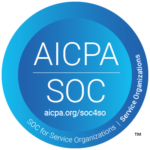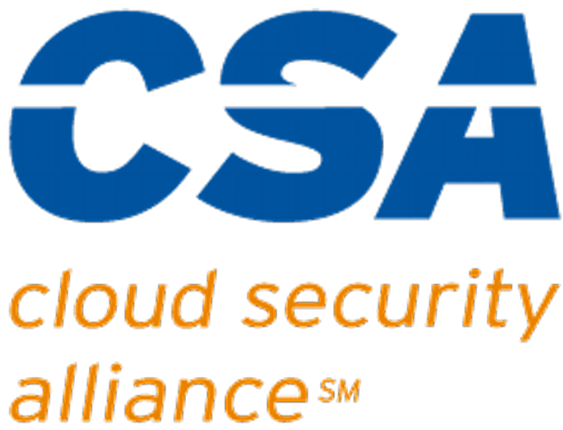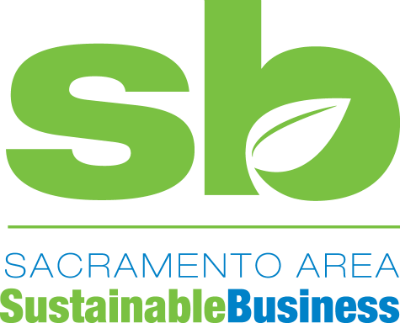Mark your calendars: on October 14, 2025, Microsoft will officially end support for Windows 10, giving businesses just a few weeks to prepare. This isn’t a routine advisory. When Windows 10 reaches its end-of-life (EOL), Microsoft will stop providing security updates, technical support, and bug fixes for the operating system that currently powers approximately 60% of business computers worldwide.

For small businesses, this deadline represents a critical crossroads. Continue with an unsupported operating system and face increasing security risks, or implement a strategic transition plan within the next three months. The clock is ticking, and the consequences of inaction could be severe.
What End-of-Life Really Means for Your Business
When Microsoft ends support for Windows 10, several important changes will occur:
Security Vulnerabilities
The most immediate concern is security. After October 14, newly discovered vulnerabilities will no longer receive patches, creating an open invitation for cybercriminals who actively target outdated systems. For reference, after Windows 7 reached end-of-life in 2020, organizations still running it experienced a 37% increase in malware infections within the first year.
“Unpatched systems are like leaving your front door unlocked in a high-crime neighborhood,” notes a cybersecurity expert. “It’s not a question of if you’ll be compromised, but when.”
Compliance Risks
For businesses in regulated industries, such as healthcare, finance, or legal services, running unsupported software often constitutes a compliance violation. HIPAA, PCI DSS, and other regulatory frameworks explicitly require systems to receive security updates. Non-compliance can result in significant fines, legal liability, and reputational damage.
Software Compatibility Issues
As software developers focus on newer operating systems, applications will gradually stop supporting Windows 10. This creeping incompatibility will affect everything from accounting software to customer relationship management tools. Critical business applications may stop functioning properly or cease to receive their own updates.
Hardware Limitations
As Windows 10 ages, new hardware may not include proper driver support. When you purchase new printers, scanners, or other peripherals, they may not be compatible with your outdated system.
Assessing Your Business’s Readiness
Before panic sets in, take a measured approach to determine your organization’s exposure. Here’s a practical readiness assessment to conduct immediately:
1. Inventory All Devices
Create a comprehensive inventory of all computers and devices running Windows 10 in your organization. Document:
- Hardware specifications (processor, RAM, storage)
- Age of the device
- Current Windows 10 version
- Primary user and business function
- Critical software installed
2. Check Windows 11 Compatibility
Microsoft has stricter hardware requirements for Windows 11 than previous upgrades. Many computers running Windows 10 smoothly may not qualify for Windows 11. The basic requirements include:
- 1 GHz or faster processor with 2 or more cores on a compatible 64-bit processor
- 4 GB RAM
- 64 GB or larger storage
- UEFI, Secure Boot capable
- Trusted Platform Module (TPM) version 2.0
- DirectX 12 compatible graphics card with WDDM 2.0 driver
- High definition display (720p), 9″ or greater monitor, 8 bits per color channel
You can use Microsoft’s PC Health Check app to verify which devices meet these requirements.
3. Evaluate Business-Critical Applications
Not all software is immediately compatible with Windows 11. Create an inventory of your mission-critical applications and check with vendors about:
4. Budget Reality Check
With less than 90 days remaining, Sacramento businesses must conduct an urgent budget assessment. Consider:
- Cost of new hardware for incompatible devices
- Software upgrade or replacement costs
- IT support and migration expenses
- Potential extended support options
- Training requirements for staff
Your Available Options
With the deadline approaching, Sacramento businesses have several paths forward:
Option 1: Upgrade to Windows 11
For compatible devices, upgrading to Windows 11 is the most straightforward solution. Microsoft provides a free upgrade path for eligible devices with a valid Windows 10 license. Benefits include:
- Continued security updates and support
- Modern interface and improved features
- Better performance on newer hardware
- Compliance with regulatory requirements
However, plan for staff training and potential workflow adjustments as the Windows 11 interface differs significantly from Windows 10.
Option 2: Purchase Extended Security Updates (ESU)
For businesses that cannot immediately upgrade all systems, Microsoft offers Extended Security Updates (ESUs) for Windows 10. This program provides critical security patches for up to three years after the end-of-support date, but with important caveats:
- ESUs are not free, with costs increasing each year
- They only cover critical security issues, not feature improvements
- They’re designed as a temporary bridge, not a permanent solution
ESU pricing is typically structured per device and increases annually to encourage migration. As of this writing, business users of Windows 10 will pay $61 per device for Year 1, $122 per device for Year 2, and $244 per device for Year 3. No ESUs are available beyond the three-year extension.
Option 3: Hardware Refresh
For devices that can’t run Windows 11, a hardware refresh may be the most cost-effective long-term solution. While this requires upfront capital expenditure, it provides:
- Modern hardware with better performance
- Full compatibility with Windows 11
- Reduced maintenance costs compared to aging equipment
- Enhanced security features built into newer devices
Many businesses find that devices over 5 years old are prime candidates for replacement rather than continued maintenance.
Option 4: Virtualization Solutions
For specific use cases where applications absolutely require Windows 10, virtualization offers a compromise:
- Run Windows 10 in a secure, isolated virtual environment
- Maintain access to legacy applications
- Limit exposure to security threats
- Provide a bridge while modernizing applications
Your 90-Day Action Plan
With less than three months remaining, Sacramento businesses need a structured approach. Here’s a practical timeline:
Immediate Actions (Days 1-15)
- Complete your device inventory and Windows 11 compatibility assessment.
- Identify mission-critical applications and verify Windows 11 compatibility.
- Develop a preliminary budget for necessary upgrades.
- Consult with IT professionals to develop a migration strategy.
- Communicate the upcoming changes to staff.
Days 16-45
- Begin testing Windows 11 on a small set of non-critical computers.
- Start migrating compatible devices to Windows 11.
- Order replacement hardware for incompatible devices.
- Develop user training materials for Windows 11.
- Consider ESU contracts for systems that cannot be immediately upgraded.
Days 46-75
- Accelerate Windows 11 migrations across your organization.
- Implement training sessions for staff.
- Set up new hardware to replace incompatible systems.
- Begin migrating data and applications to new systems.
- Test and validate all business-critical functions on new systems.
Final Countdown (Days 76-EOL)
- Complete all remaining migrations.
- Finalize ESU contracts for any remaining Windows 10 systems.
- Verify backups of all systems.
- Conduct final security audits.
- Develop a decommissioning plan for any remaining Windows 10 systems.
Common Migration Challenges and Solutions
Sacramento businesses should anticipate several common challenges during this transition:
Application Compatibility Issues
Challenge: Legacy applications may not function properly on Windows 11.
Solution: Test critical applications early in a controlled environment. Work with vendors for updates or patches. Consider application virtualization for software that is truly incompatible.
User Resistance
Challenge: Staff may resist the change to a new operating system interface.
Solution: Provide clear communication about the security necessity of the upgrade. Offer targeted training focused on workflow differences. Create quick reference guides for everyday tasks.
Budget Constraints
Challenge: Unexpected hardware replacements may strain IT budgets.
Solution: Prioritize upgrades based on business impact and security risk. Consider leasing options for new hardware. Explore cloud-based alternatives for specific functions.
Downtime Concerns
Challenge: Migrations can disrupt business operations.
Solution: Schedule upgrades during off-hours or slower business periods. Use a phased approach targeting departments with lower immediate impact first. Have rollback plans for critical systems.
How Datacate Can Help Sacramento Businesses
As a local IT support and managed services provider, Datacate understands the unique challenges Sacramento businesses face with this transition. Our team specializes in:
- Comprehensive Readiness Assessments: We’ll inventory your current technology and develop a customized migration plan that minimizes disruption.
- Managed Windows 11 Migrations: Our technicians handle the entire upgrade process, from compatibility testing to data migration and post-upgrade support.
- Hardware Procurement and Setup: We source, configure, and deploy new equipment optimized for your business needs and budget.
- Staff Training: We offer customized training sessions to help your team quickly and productively adapt to Windows 11.
- Ongoing Support: Our managed IT services ensure your new systems remain secure, optimized, and reliable long after the migration.
Don’t Wait Until It’s Too Late
With less than 90 days remaining until Windows 10 reaches end-of-life, Sacramento businesses must act now. The consequences of continuing to run an unsupported operating system extend far beyond IT inconveniences, potentially impacting:
- Data security and customer privacy
- Regulatory compliance and legal liability
- Business continuity and operational efficiency
- Technology costs and resources
The businesses that begin planning today will navigate this transition with minimal disruption. Those who delay may find themselves scrambling in October, facing higher costs, limited options, and increased security risks.
Start Your Windows 11 Transition Today
Contact Datacate for a no-obligation Windows 10 end-of-life readiness assessment. Our local team will help you understand your current position and develop a practical, budget-conscious plan to navigate this critical IT transition.
The countdown is on – don’t let the Windows 10 deadline catch your small business unprepared.




